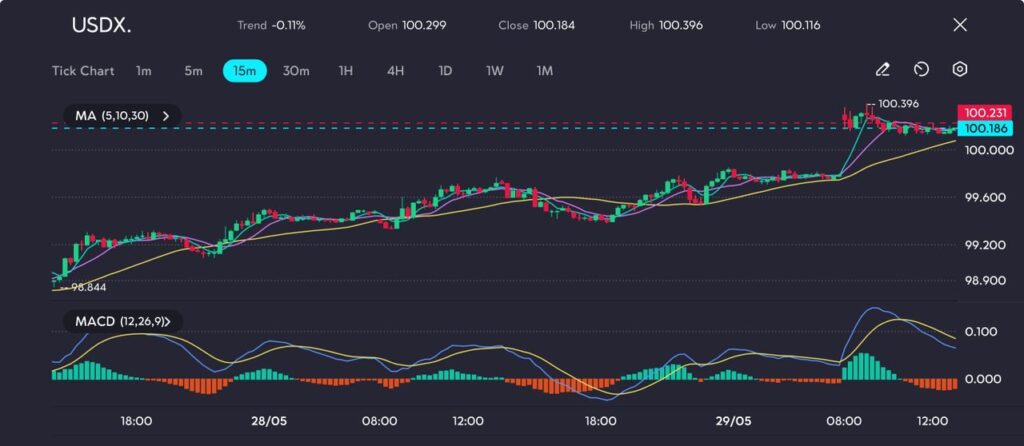
A key US court ruling has shaken up markets, halting a major tariff plan and prompting a shift in investor sentiment. The decision sparked renewed appetite for risk assets and strengthened the US dollar, though uncertainty remains as an appeal moves forward and fiscal concerns linger.
The US Dollar Index (DXY) surged on Thursday, breaking above the key 100.00 level after a federal court blocked former President Donald Trump’s wide-reaching import tariffs.
The ruling triggered a rally across equity futures and led to a broad pullback in safe-haven currencies, including the Japanese yen and Swiss franc.
Investor sentiment shifted sharply into “risk-on” mode, with S&P 500 futures jumping by 1.5%. The removal of immediate tariff risks prompted traders to exit defensive positions, favouring risk assets instead.
At the same time, US Treasury yields moved higher, with the 10-year yield climbing 4.4 basis points to 4.52%, and the 2-year rising 6 basis points to 4.05%.
These yield gains enhanced the dollar’s appeal as capital flowed towards higher-yielding US assets.
Despite the market’s initial optimism, legal and fiscal uncertainties remain. The Trump administration has filed an appeal against the court ruling, raising the likelihood of the case progressing rapidly through the legal system, potentially reaching the Supreme Court.
This development introduces a degree of unpredictability that has not yet been fully priced into the markets. A successful appeal could reverse the current bullish momentum in the dollar.
Beyond legal concerns, the ruling also casts fresh doubt on the sustainability of US fiscal policy. The blocked tariffs were expected to generate revenue that would help offset the fiscal burden of Trump’s tax cuts and spending initiatives—already projected to add around $3.8 trillion to the national debt over the next decade.
Without this revenue, pressure on the federal budget could intensify. Should inflationary concerns re-emerge, longer-term US Treasuries might come under pressure, potentially weakening the dollar over time.
From a technical perspective, the US Dollar Index rebounded from the 96.844 low observed on 28 May, climbing steadily to challenge resistance at 100.396 before entering a consolidation phase.
The 30-period moving average acted as dynamic support throughout the session, underlining the strength of the uptrend.

The MACD indicator registered a bullish crossover during the breakout, with momentum peaking shortly thereafter.
However, a flattening MACD histogram now points to a potential slowdown in bullish momentum.
Despite this, the DXY remains above short-term moving averages and continues to hold the psychologically significant 100.00 level.
A decisive break above 100.40 could open the door to further gains in the short term.
Caution is still warranted. With the Trump administration’s appeal underway, the legal battle surrounding the tariffs is far from over.
Traders are closely monitoring whether the Supreme Court will intervene — a development that could reignite volatility across both currency and bond markets.
Click here to open account and start trading.